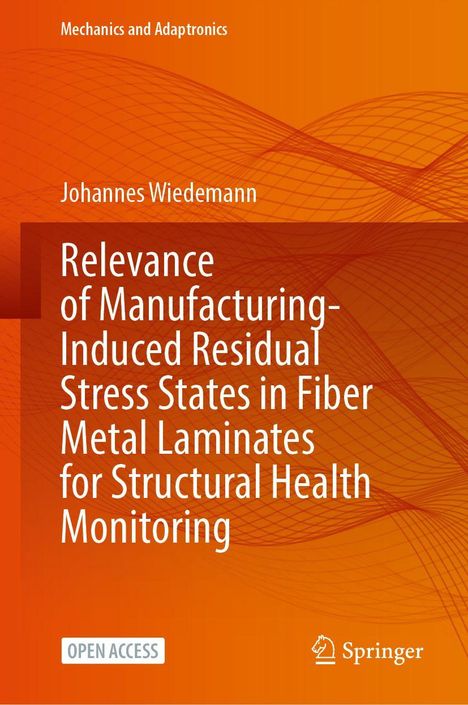Johannes Wiedemann: Relevance of Manufacturing-Induced Residual Stress States in Fiber Metal Laminates for..., Gebunden
Relevance of Manufacturing-Induced Residual Stress States in Fiber Metal Laminates for Structural Health Monitoring
Sie können den Titel schon jetzt bestellen. Versand an Sie erfolgt gleich nach Verfügbarkeit.
- Verlag:
- Springer-Verlag GmbH, 01/2026
- Einband:
- Gebunden
- Sprache:
- Englisch
- ISBN-13:
- 9783032099242
- Artikelnummer:
- 12467596
- Umfang:
- 142 Seiten
- Sonstiges:
- XVI, 142 p. 92 illus., 87 illus. in color.
- Erscheinungstermin:
- 3.1.2026
- Serie:
- Mechanics and Adaptronics
- Hinweis
-
Achtung: Artikel ist nicht in deutscher Sprache!
Klappentext
This open access dissertation explores how manufacturing-induced residual stress states in fiber metal laminates (FMLs) affect a structural health monitoring (SHM) system. SHM is a promising technology for monitoring the structural integrity during operation. SHM systems using guided ultrasonic waves (GUWs) enable the detection of damage located inside a laminate and are, therefore, particularly suitable for FMLs due to their complex damage characteristics. Experimental methods for quantifying residual stresses in FMLs are developed and evaluated. This work shows that process strains can be measured throughout manufacturing with sensors integrated into the laminate. The strain measurements verify different modified cure cycles to change residual stress states in FMLs consisting of carbon-fiber-reinforced polymer (CFRP) and steel. To avoid complex sensor technology in industrial manufacturing processes, a robust method is additionally presented that derives a process-specific parameter, the stress-free temperature, from asymmetrical reference laminates. The quantified residual stress states in various CFRP-steel laminates allow the experimental investigation of the influence of stress on the propagation velocity of fundamental GUWs. With laser-scanning-vibrometry, dispersion diagrams for various FMLs over a wide frequency range are experimentally determined. The results show no significant influence of the residual stress states on the phase velocity of the fundamental symmetric and asymmetric GUW modes for the investigated FMLs. In contrast, comparative measurements under external tensile prestress show a considerable increase in phase velocity with increasing prestress for both fundamental GUW. Finally, fatigue tests are performed on CFRP-steel laminates to investigate the influence of different residual stress states on the residual life prediction capabilities of an SHM system. The results show that reducing residual stresses through modified cure cycles delays crack initiation, reduces crack propagation velocity, and, consequently, extends the fatigue life of the investigated FMLs.


